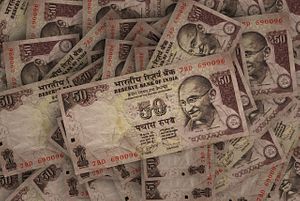On August 30, 2019, India’s Ministry of Statistics released its estimates of the gross domestic product (GDP) for the first quarter of 2019-2020, ranging from April-June 2019. The estimates showed that India’s GDP grew only at 5.0 percent, the lowest growth since Q1 in 2012-2013, when the economy grew at 4.9 percent. The data also showed that the slowdown was caused by a “sharp deceleration in the manufacturing sector and sluggish agriculture output.” Facing this slump in growth, what tools can the Modi government deploy to boost growth and bring the economy back on track?
Fiscal Policy
Following the release of the GDP estimates, calls for increased fiscal stimulus to spur growth have increased. Indeed, Kunal Kundu, the India Economist at Societe Generale stated that “this does call for some fiscal stimulus by the government… For immediate impact, some sort of stimulus is required for sure.”
However, increasing spending to provide a fiscal stimulus to the economy may not be easy for this government. The government’s own target for its budget deficit is 3.3 percent of GDP for 2019-2020, giving it little room to play with. Moreover, estimates suggest that public sector borrowing, which includes borrowing made by India’s state governments and public sector enterprises as well as the central government, is more than 8 percent. Given these circumstances, it is uncertain if the government will be able to provide any meaningful fiscal stimulus.
Monetary Policy
Another tool that the Modi government can deploy is on the monetary policy front. Several economists have stated that, in light of the low GDP growth numbers, the Reserve Bank of India (RBI) will cut its repo rates by a minimum of 25 basis points (0.25 percent), with banks such as Goldman Sachs and HDFC Bank even suggested that the RBI’s Monetary Policy Committee would announce cuts in the range of 40 or 50 basis points (0.4 percent or 0.5 percent).
However, as Niranjan Rajadhyaksa notes, these cuts are unlikely to provide immediate relief. He argues that stimulus provided by monetary policy “works with a lag of around three quarters in India, which means that a rate cut today moves the demand needle nine months later.” Therefore, even though the government may have more space to provide some stimulus on the monetary policy front, it may not provide the immediate relief that the economy may need right now.
Structural Reforms
Beyond the immediate fiscal and monetary measures that the government can deploy, the government should also consider structural reforms that, if addressed, can unleash a new wave of economic growth in India. While the Reserve Bank of India, in its annual report released on August 29th, stated that “the recent deceleration could be in the nature of a soft patch mutating into a cyclical downswing, rather than a deep structural slowdown,” it did go on to say that “there are still structural issues in land, labor, agricultural marketing and the like, which need to be addressed.” Given that the slowdown in the economy is playing out across multiple sectors – manufacturing, transport, communication, construction, agriculture, and real estate – addressing structural issues can provide a boon to the economy overall while signaling to the market stakeholders a serious commitment on part of the Modi government to improving the economy.
Some specific reforms for the Modi government to consider include relaxing restrictions on land acquisition created by the Land Acquisition Act, 2013, releasing major ports from government approval, relaxing labor laws, and ensuring progress on key areas where India lags behind on the World Bank’s Ease of Doing Business index such as “Registering Property” and “Enforcing Contracts.” However, these reforms will also require long gestation periods, so the government would need to use these tools in tandem with monetary and fiscal tools, rather than by themselves.
Following the slowdown in India’s economy, the Modi government will need to consider a range of policy options on how to respond. While there is no one silver bullet that the government could use to reverse this slowdown, the government has monetary, fiscal, and structural reform tools it can deploy. While the slowdown caused India to loose its spot as the fastest growing major economy in the world, a timely and thoughtful response across these three policy options can prevent a further slump, and even bring India’s economy back on track.
































